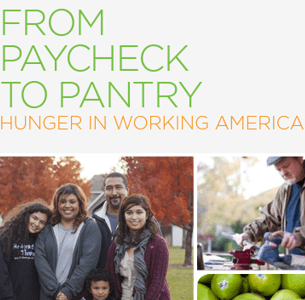From the local to the national level, public policies specifically aim to alleviate poverty and the burdens faced by food insecure families around the country. But many policies have shortcomings or limitations.
Feeding America's Policy & Benefits research explores how well public benefit and charitable programs work to support families in poverty, as well as the kinds of coping strategies that families exercise to manage their resource constraints.
The Urban Institute found that the record-breaking rising food costs in 2022 made it hard for many people to adequately feed themselves and their families. Though the Supplemental Nutrition Assistance Program (SNAP) helps families purchase the food they need, the maximum benefit rarely covers the cost of a modestly priced meal. Using county-level food price data from NielsenIQ, they compared the cost of a modestly priced meal with the maximum SNAP benefit before and after the USDA’s fiscal year 2023 cost-of-living adjustment took effect in October 2022. Overall, we find that the adjustment was helpful but not sufficient, and SNAP continues to fall short in helping families afford rising food prices in a majority of US counties. Find the study's results and fact sheet here.
2023 - The Urban Institute
Qualitative and limited quantitative data were collected in two states from households using both SNAP and charitable food pantries. Approximately 60% of households identified health conditions, with diabetes and cardiovascular disease being the most commonly cited. Households also experienced challenges with employment, living arrangements and household composition, and transportation, among others. Published in the Journal of Hunger and Environmental Nutrition, this study also provides insight into strategies employed by households to surmount these obstacles.
2018 - Feeding America and American University




